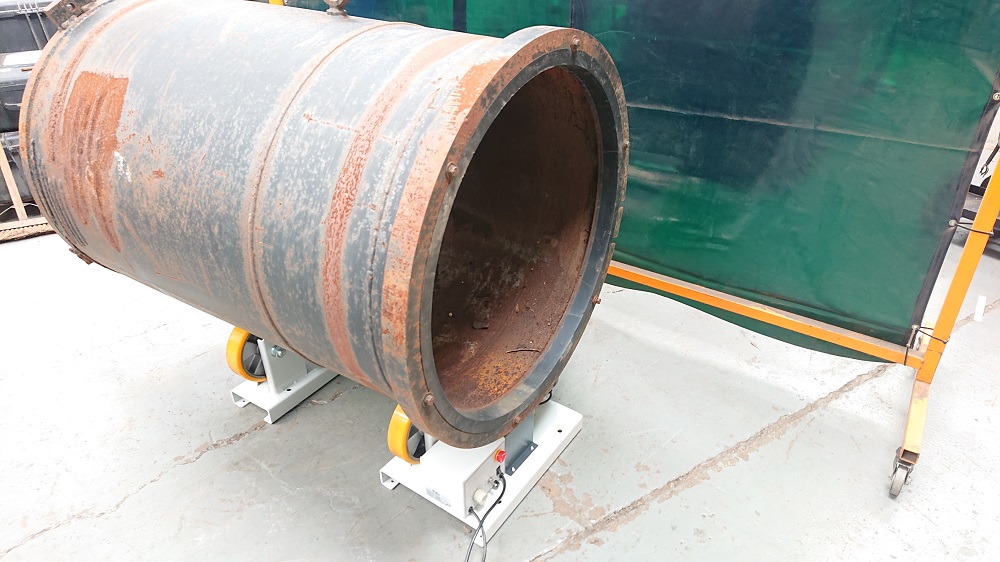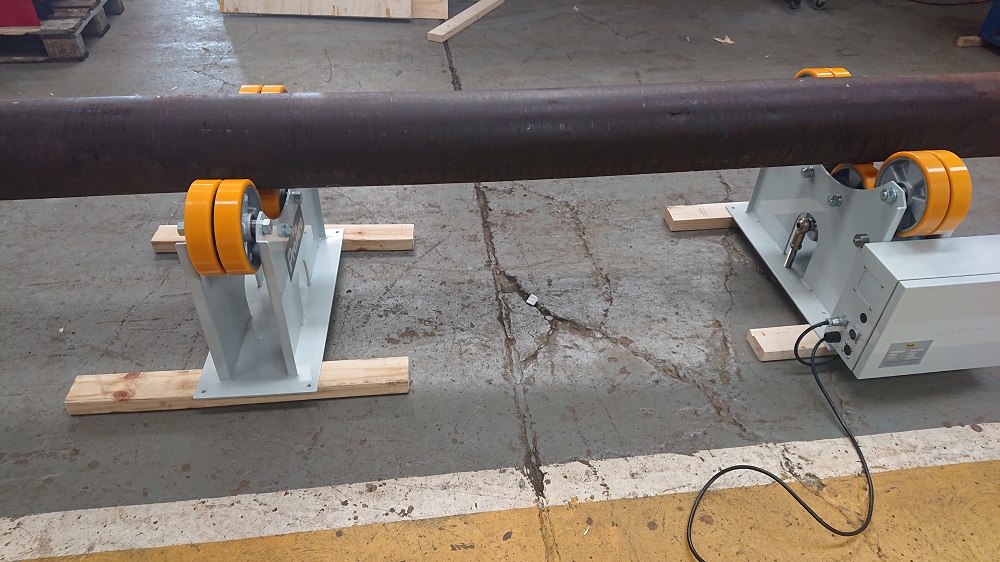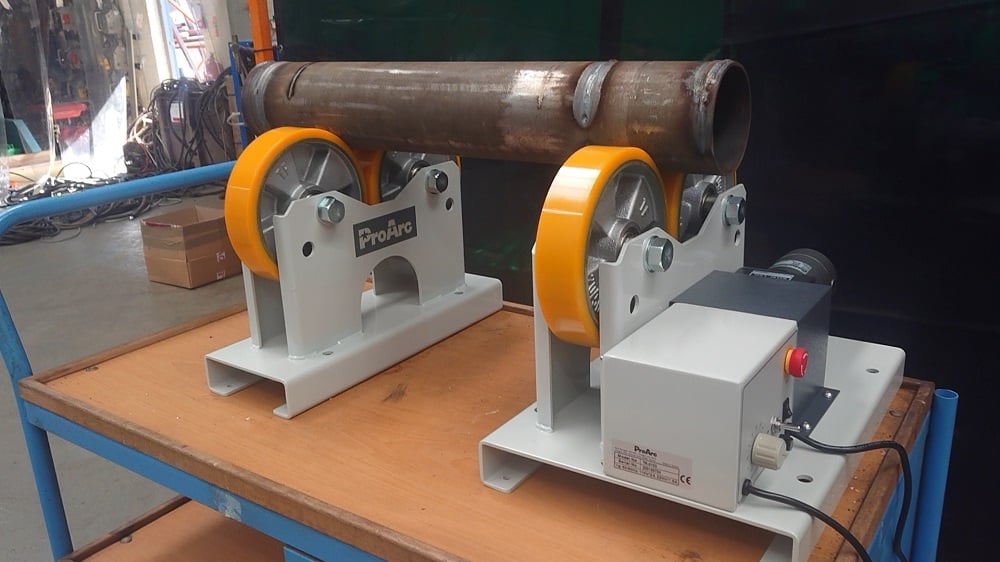What is a Welding Rotator
A welding rotator is a tool for making it much easier to weld pipes and other rounded objects. They can handle small or large sizes and save time by creating two moving pieces of metal to join together. This leaves both hands free to focus on welding!
Pipe rotators are similar to positioners, in that it’s a mechanical means to rotate any steelworks with cylindrical vessels. Be it small diameter piping to large industrial cylindrical vessels for wind-tower production.
How do they help?
Adjustable pipe welding rotators are beneficial in a manufacturing fabrication workshop. They minimise handling, increase efficiency, and dramatically improve the quality of workmanship from welders of all skill levels.
What capacity can they carry?
Rotators for welding come in all sizes, some are conventional rotators but others are self aligning meaning they react to the pipe or vessel size.
Machine of the Week
Our MOTW is one of the smallest rotators sets on the market.
They will carry up to 1000kg with a powered unit and idler making up the set of welding rotators.
Ideal for welding tanks in rotation the ProArc TR range is capable of turning up to 6,000kg.
As the UK and Ireland ProArc Agents products we promise you will not find a better available option.
Featuring metallic rollers bonded with polyurethane, quick and accurate roll centring adjustment and a foot control for simple stop/start. Alternatively you can add the option of variable speed foot control from slow to fast depending on the application you are doing.

How to use a Rotator set
For smaller examples, a TIG welder joining a threaded flange to a plate will be our example.
First, make a few welds in strategic places to hold the material in position. Then, position the welding gun and the filler wire in place to finish the rest of the job.
To do this, start the rotator and position the gun. Then, when the right arc and temperature is found for the job, feed the filler wire into the rotating workpiece.
Going all the way around will make one complete pass.
It may be necessary to keep the gun on the material longer without the filler wire to make a strong weld.
The ProArc 1000kg model are bench type and easy to set up and use.
Which model should I choose?
A rotator is a novel way to make the job of welding two parts together much easier.
But the worker must choose one that will safely support the weight of the project.
For the welder who needs to join two pipes, using a rotator that can not handle the weight of the pipes could be a dangerous proposition.
For this reason, check the specifications of the rotator machine before trying to mount large jobs on it.
The rating for the rotator should be higher than the weight of the pipe or other item being welded.
Idler units can be added to spread the load, but seeking advice is the best option when it comes to the safety of the operator.
Pipeline Case Study Scenario
When fabricating the same items repeatedly, it pays to be able to do it at speed.
Being able to automatically rotate a welded item is, therefore, a remarkably good idea.
Machinery design engineers have already thought about this and have created rotators for many different applications, that work by rotating the stock.
So imagine two huge pieces of metal tubing that will make up a pipeline oftentimes need to be welded together. To do this safely and quickly, the two weldments are mounted on the wheels of the welding positioner.
The wheels allow the job to be rotated while welding is carried out.
With this setup, it may be that the pipes can be welded completely with only one pass.

Are ProArc Rotators simple tools?
Since the idea is to automate a welding job, a rotator is scaled to do it for a particular job. If a job is to make small pieces over and over again, the rotator will likely be simple much just like these ProArc TR 1000 rotators that we have in stock in the UK.
We have the MOTW in stock, we support these units from the UK. Get in touch now and be surprised at just how little these cost compared to the benefits you will gain.

